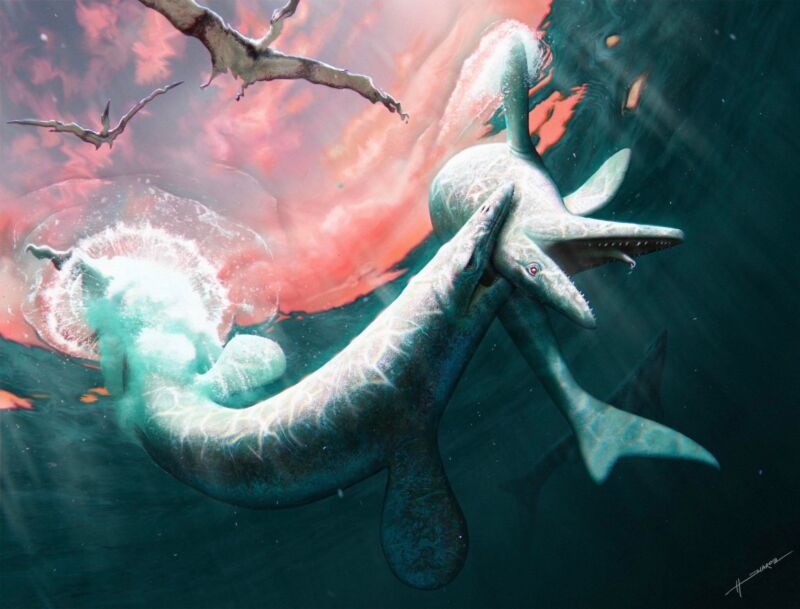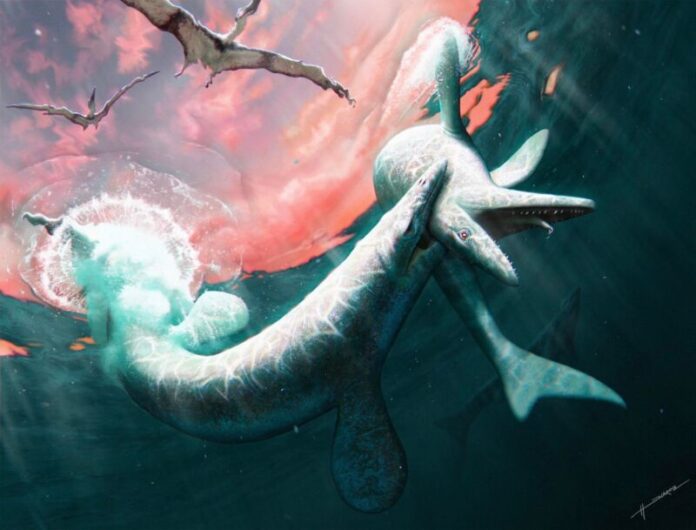
Enlarge (credit: Henry Sharpe / AMNH)
In 2015, Deborah Shepherd returned to the site where she and other volunteers had worked on a public fossil dig with family members. That’s when she saw it: a fossil lying there, exposed on the surface. Most people would not have recognized it for what it was: It wasn’t a skull, a leg bone, or even a partial jaw. It was just a chunk of bone.
Shepherd immediately notified a park ranger. That ranger then notified the North Dakota Department of Mineral Resources. Her actions ultimately led to the discovery of what scientists say is not only a new species, but an entirely new genus of mosasaur, a giant marine predator from Late Cretaceous seas. Bite marks preserved on the fossil also suggest that it met its end at the hands—or rather teeth—of another mosasaur.
Meet Jorgie the mosasaur
The new mosasaur was described Monday in the Bulletin of the American Museum of Natural History. Jǫrmungandr walhallaensis, or "Jorgie" for short, is the name suggested by co-author Clint Boyd, and it’s steeped in Norse mythology. Jǫrmungandr is the name of a sea serpent who circles the world with its body, clasping its tail in its jaws.
Read 30 remaining paragraphs | Comments
Ars Technica - All contentContinue reading/original-link]




